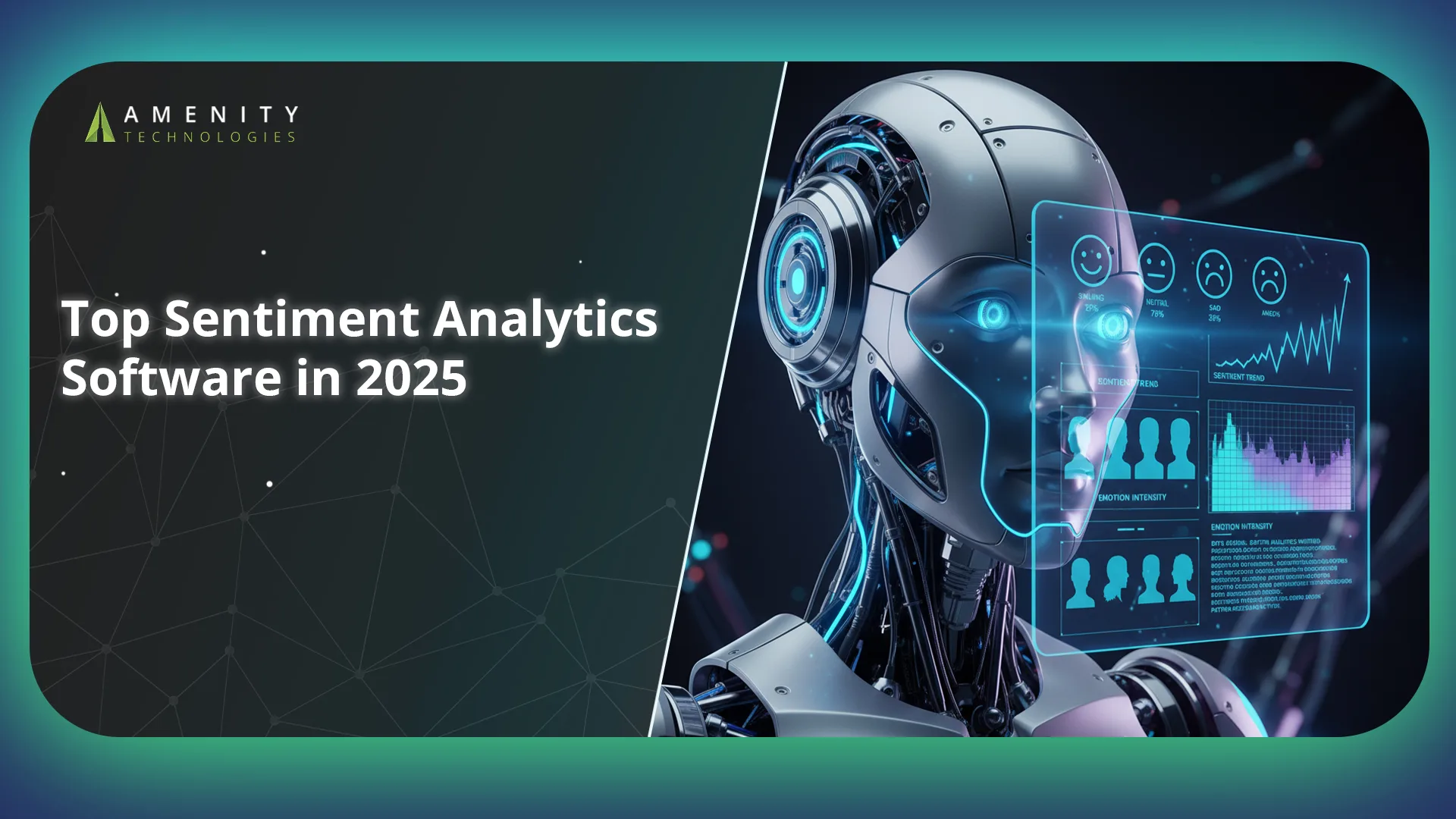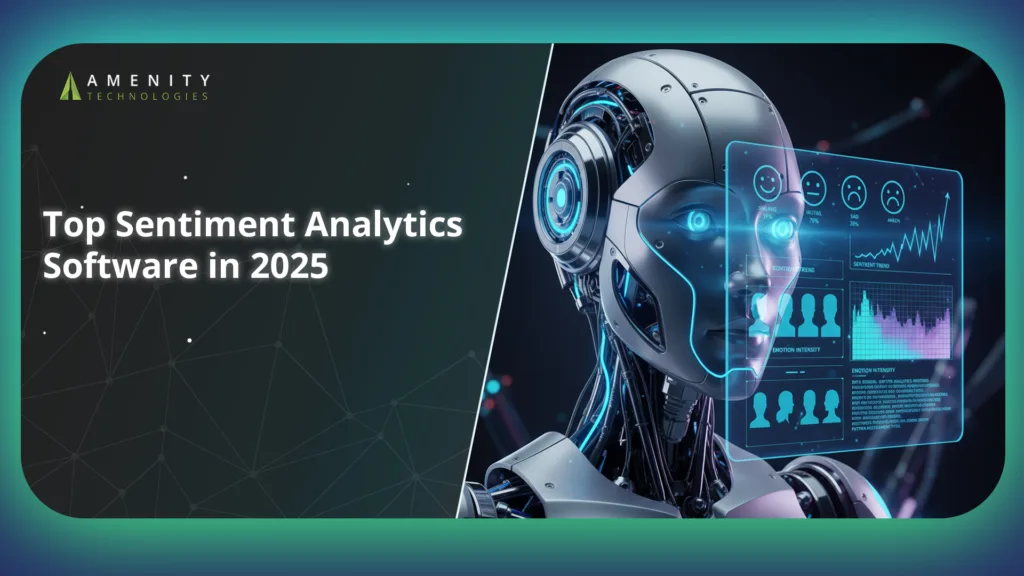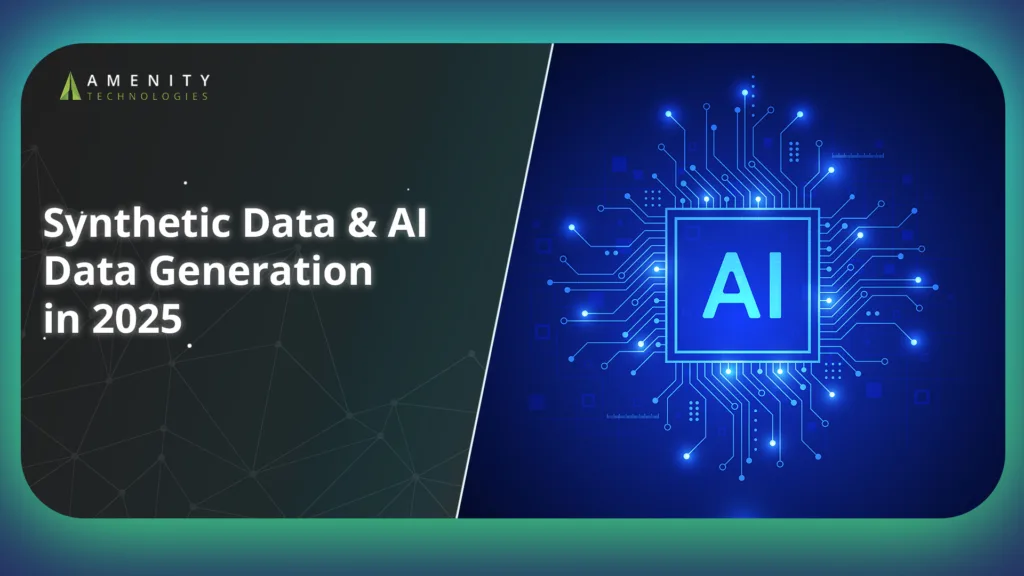Brands often struggle to identify real emotions behind comments when they have an influx of customer data, from reviews, chat logs, and social posts. Traditional analytics read sentiment merely as positive or negative, leaving urgent insights hidden. Meanwhile, the sentiment analytics software market is projected to grow from USD 2.53 billion in 2024 to USD 5.49 billion in 2029, reflecting a strong CAGR of 16.5%.
Hence, with the growing data, brands need tools that do more than track word counts. Modern sentiment analysis AI must handle many languages, live-data streams, emojis, and cross-channel signals. Smart brands now use sentiment analysis tools to anticipate issues, surface hidden opinions, and convert raw data into actionable insight.
In this guide, let’s compare leading platforms, highlight must-have features, explore real use cases, and provide a structured way to select the right solution for your business.
Why Sentiment Analytics Software Matters in 2025?
Understanding customer emotions is the foundation of meaningful digital engagement. Businesses across industries now rely on sentiment analytics software to interpret real-time opinions, improve brand reputation, and guide smarter decisions.
With growing online interactions and customer reviews influencing purchase behavior, these insights have become indispensable for sustainable business growth.
1. From Text to Emotion: Deeper Customer Understanding
Brands generate massive volumes of feedback across reviews, surveys, chat logs and social media. Without advanced sentiment analysis AI capabilities, much of that data remains superficial.
Modern tools now move beyond simple polarity and begin to interpret emotions such as joy, frustration, anger and anticipation. Research shows transformer-based sentiment-engines improved accuracy by 17-23 % compared to older lexicon methods.
This depth enables product and support teams to prioritise issues more effectively by focusing on high-emotion signals rather than just volume.
2. Real-Time Insights & Crisis Detection
Feedback channels deliver data in real time. Firms using sentiment tracking dashboards report reduction of negative sentiment spikes by over 30 % in six months.
In 2025, real-time sentiment analysis tools can trigger alerts when emotional tone shifts, enabling rapid response to PR or operational risks. That capability transforms reactive monitoring into proactive risk-management.
3. Multilingual & Multimodal Demand
Global brands require sentiment capabilities in many languages and formats. The market now demands multilingual sentiment support, processing emojis, images and voice for richer context. So, the need for language- and channel-agnostic coverage across brands, reviews, social media and support conversations will increase.
4. Driving Strategy, Not Just Metrics
Sentiment moves from a reporting metric into an actionable asset. Organisations use review mining and opinion mining to inform product development, marketing strategy and competitive benchmarking. According to one analysis, companies combining feedback across channels achieved 67 % more accurate trend predictions than those relying on a single source.
With a robust sentiment dashboard, teams convert raw data into workflows: alerts trigger agents, dashboards flag product issues, and pipelines route flagged feedback to decision-makers.
Top Sentiment Analytics Software Tools to Watch in 2025

The demand for accurate emotional intelligence in business data has pushed innovation across sentiment analysis platforms. Companies now need sentiment analytics software that fits different operational scales, from enterprise suites to agile APIs. Here are the tools leading this space in 2025.
Enterprise & All-Round Platforms
These sentiment analytics software platforms are built for organizations managing massive data volumes across regions and channels. They combine social listening, predictive insights, and unified dashboards to guide marketing, PR, and CX teams.
- Brandwatch: Offers advanced sentiment and social listening features with strong multilingual support. It helps enterprises interpret emotional cues from vast social datasets with high precision.
- Talkwalker: Supports over 127 languages and includes predictive analytics for spotting emerging trends. Its built-in crisis alert system helps brands manage reputation risks before they escalate.
- Sprinklr/Sprout Social: Integrates social management and sentiment insights into one platform, allowing brand teams to track perception and engagement across multiple channels in real time.
Customer Feedback & Support-Centric Tools
This category focuses on improving service quality and customer experience. By using sentiment analysis tools, support teams can identify recurring issues, prioritize complaints, and measure emotional tone in every interaction. These platforms not only improve efficiency but also help organizations prevent churn by recognizing dissatisfaction early.
- SentiSum: Focuses on customer support data, analyzing sentiment in helpdesk tickets and tagging themes for faster issue resolution.
- MonkeyLearn: Provides customizable AI for analyzing feedback, surveys, and product reviews. It helps teams build and refine models without coding expertise.
- Medallia/Qualtrics: When combined with sentiment modules, these tools extend their CX analytics to detect tone, satisfaction, and friction points in customer interactions.
Lightweight & Niche Tools/APIs
For startups and developers, lightweight sentiment analytics software and APIs deliver flexibility without heavy infrastructure. They’re perfect for experimentation or adding targeted emotional insights to specific projects. Despite their simplicity, these tools offer reliable accuracy and scalability, making them a smart option for agile businesses and research teams.
- Google Cloud Natural Language API: Offers scalable entity-level sentiment detection with strong API integration options for developers and startups.
- Open-source or no-code frameworks: Ideal for experimentation and embedding within custom workflows, these tools provide flexible ways to test and deploy sentiment analysis tools without large-scale implementation cost.
Key Features to Evaluate in Sentiment Analytics Software
Choosing the right sentiment analytics software involves understanding what features will best meet your business’s needs. In 2025, businesses are prioritizing precision, flexibility, real-time capabilities, and ease of integration. Here are the key features you should evaluate before selecting a platform:
1. Accuracy, Context & Emotion Granularity
One of the most important aspects of sentiment analytics software is its ability to accurately detect emotions, sarcasm, and mixed sentiments. Today’s AI models go beyond identifying simple positive or negative sentiment; they delve into complex emotional categories such as joy, frustration, or surprise.
This level of emotion granularity helps businesses take more informed actions based on customer feedback. For instance, the ability to recognize sarcasm or shifts in context significantly increases sentiment accuracy, ensuring a more precise understanding of customer feelings.
2. Source Coverage & Channel Integration
The ability to pull data from multiple sources is vital in today’s world. The best sentiment analysis tools integrate with various platforms, including social media channels, app reviews, surveys, and chat logs. This gives businesses a comprehensive view of their customer sentiment across touchpoints.
In addition to this, the ability to ingest data via APIs or web crawling capabilities ensures that businesses can bring in data from external sources, ensuring no customer feedback is missed. Integration with CRMs or helpdesk systems is another essential feature for seamless workflow management.
3. Real-Time & Streaming Processing
Real-time sentiment analysis is crucial for brands to react quickly to customer feedback. Sentiment analytics software with live streaming capabilities enables businesses to detect shifts in sentiment as they happen, triggering alerts for immediate action.
Whether a negative review is going viral on social media or a support ticket receives escalating emotions, businesses can respond swiftly to prevent crises. Low-latency processing ensures that sentiment analysis is happening in near real-time, allowing brands to stay ahead of potential issues.
4. Dashboards, Reporting & Workflow Automation
An intuitive dashboard is the heart of effective sentiment analysis. Sentiment analytics software should offer customizable dashboards that allow businesses to visualize sentiment trends, track KPIs, and make data-driven decisions.
Furthermore, integration with reporting and workflow automation tools is essential. With the ability to trigger alerts, tasks, or flags based on sentiment spikes, teams can automate responses or escalate issues quickly. This feature ensures no important customer insight goes unnoticed.
5. Language & Regional Support
As businesses expand globally, multilingual sentiment analysis has become a must-have feature. Sentiment analytics tools need to accurately process sentiment in a variety of languages, while also adapting to regional dialects and cultural nuances.
Whether your brand operates in Asia, Europe, or Latin America, the ability to detect sentiment in different languages ensures that you can make informed decisions across diverse markets. This is especially important for global brands that need sentiment consistency across borders.
6. Scalability, Compliance & Security
Handling large volumes of data while ensuring privacy is non-negotiable for enterprises. The best sentiment analytics software can scale to accommodate increased data inputs, whether that means more social mentions, customer reviews, or support tickets.
In addition to scalability, compliance with data protection laws such as GDPR is crucial for businesses that handle sensitive customer information. Enterprise-level features, including role-based access and audit logs, also ensure that data is handled securely and only accessed by authorized personnel.
How to Select the Right Sentiment Analytics Software for Your Use Case?

Not every sentiment analytics software tool will meet your specific needs. Selecting the right platform requires understanding your unique requirements, evaluating different options, and considering both long-term costs and vendor stability. Here’s how to choose the best tool for your business:
1. Define Your Core Use Cases & Channels
Before diving into tool comparisons, clearly define your core use cases.
Are you monitoring social media sentiment, analyzing customer reviews, tracking support ticket sentiment, or gathering feedback from campaigns?
Each of these use cases requires different strengths.
For example, a tool like Talkwalker excels at social sentiment analysis, while MonkeyLearn is ideal for customizable sentiment analysis of surveys and reviews. Defining your goals and channels will help you narrow down your choices to the most effective solutions.
2. Pilot & Compare Multiple Tools
After narrowing your options, it’s time to put the tools to the test. Use small datasets across different platforms for a side-by-side evaluation.
Test these tools on domain-specific data, such as product reviews or industry-related comments, to get a realistic understanding of their accuracy.
This trial period will help you evaluate how well each tool captures sentiment in your specific context and whether it meets your expectations.
3. Budget, Licensing & ROI Considerations
Different pricing models may suit your business better depending on your usage patterns. Some platforms charge on a subscription basis, while others use per-mention pricing.
Consider not only the upfront costs but also hidden fees like integrations, staff training, and API usage. A sentiment analysis tool may appear affordable at first glance, but ongoing expenses, like staffing or additional integrations, can add up. Ensure you assess the total cost of ownership to determine the ROI.
4. Support, Customization & Vendor Roadmap
When evaluating sentiment analytics tools, consider the level of support provided by the vendor. How easy is it to tune models for your business domain?
Customization can be critical for businesses that need sentiment analysis tools to reflect specific industry jargon or regional language nuances. Additionally, ask about the vendor’s roadmap.
Do they have plans for future upgrades, or will your tool become outdated in a few years? A clear, ongoing product development plan can provide long-term value.
5. Vendor Stability & Ecosystem Fit
Lastly, ensure the tool integrates seamlessly with your existing tech stack. Whether it’s your CRM, helpdesk system, or analytics platform, the sentiment analytics software should fit into your workflow. Don’t forget to check the vendor’s stability.
Look at their track record, customer reviews, and references. The last thing you want is to invest in a tool that is not backed by reliable support or has a history of poor service.
How Amenity Technologies Can Help with Sentiment Analytics Software?
Selecting, integrating, and optimizing sentiment analytics software takes more than tool comparison. It requires hands-on expertise in AI, data pipelines, and model fine-tuning.
That’s where Amenity Technologies comes in with our machine learning model development services. We help businesses identify the right solution, deploy it seamlessly, and build custom sentiment systems that adapt to domain-specific data.
- We bring deep experience in NLP, data engineering, and AI-driven sentiment modeling. Our specialists design systems that interpret emotional tone with greater context awareness.
- Our approach improves the precision of sentiment analysis tools across industries like SaaS, finance, healthcare, and retail.
- We follow a streamlined process to develop and deploy sentiment analysis workflow. Our developers run pilot tests across shortlisted sentiment analytics software platforms to compare performance on your actual datasets.
- We build complete sentiment intelligence ecosystems. This includes model tuning for your domain, automated data pipelines, and interactive dashboards for insight visualization.
- Our team is adept at implementing custom sentiment engines, real-time alerts, and monitoring systems that evolve as your customer feedback grows.
Conclusion
Sentiment analytics software has become a strategic asset for understanding customer emotions at scale. It helps brands detect frustration before it becomes churn, identify what drives loyalty, and make data-backed decisions faster. In 2025, the real advantage lies not in having more data but in interpreting it intelligently.
Choosing the right sentiment analysis tools means balancing accuracy, integration, and adaptability.
By working with experts like Amenity Technologies, businesses gain access to precision-built sentiment systems that keep pace with language trends and customer expectations. The outcome is simple, clearer insights, faster action, and stronger brand intelligence.
FAQs
Q1: Can sentiment analytics detect sarcasm or irony?
Modern sentiment analytics software can detect sarcasm and nuanced emotions to some extent. Custom training on domain data significantly improves accuracy.
Q2: How many languages should my sentiment tool support?
Most global brands expect coverage for at least ten major languages. Broader multilingual support helps maintain accuracy in region-specific sentiment tracking.
Q3: Is it better to use a full platform or API tool?
It depends on your setup. Full platforms offer ready dashboards and reports, while APIs are ideal for teams that already manage their data infrastructure.
Q4: How costly is sentiment analytics software in 2025?
Pricing varies by data volume, number of channels, and features like real-time sentiment or emotion detection. Many vendors offer free or limited trial options.
Q5: How often should models be retrained?
Retraining every quarter or when accuracy noticeably declines ensures the sentiment analysis tools stay aligned with language shifts, slang, and new data trends.
Q6: Can sentiment analytics software integrate with my CRM or helpdesk?
Yes. Most leading sentiment analytics software options offer native or API-based integrations with CRMs, ticketing platforms, and BI dashboards.












